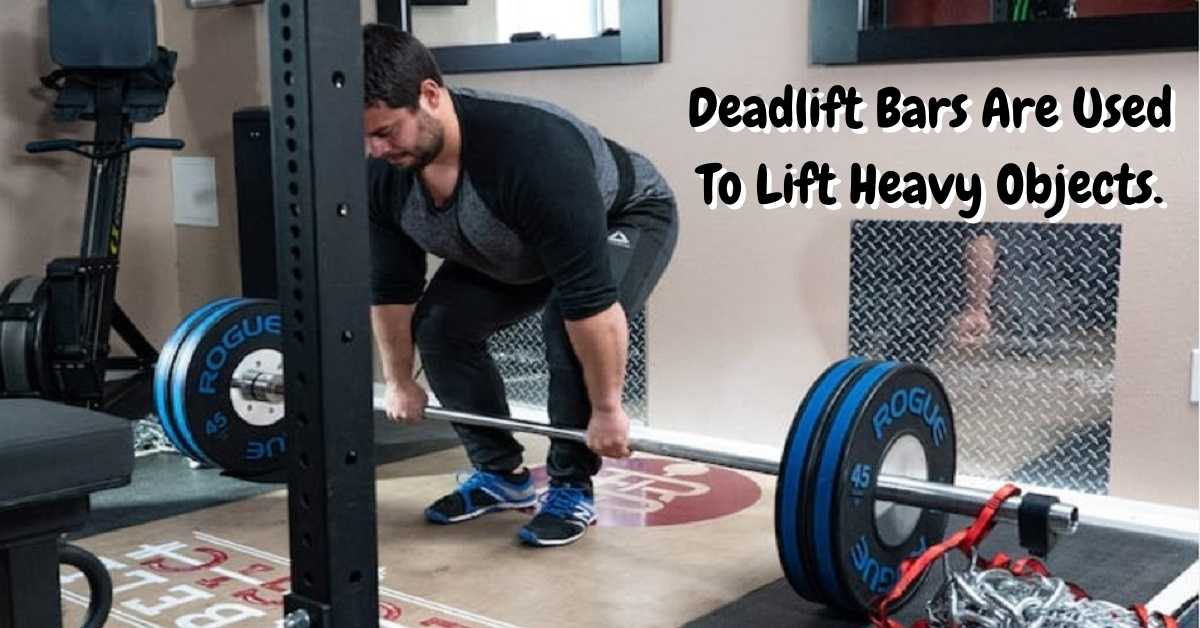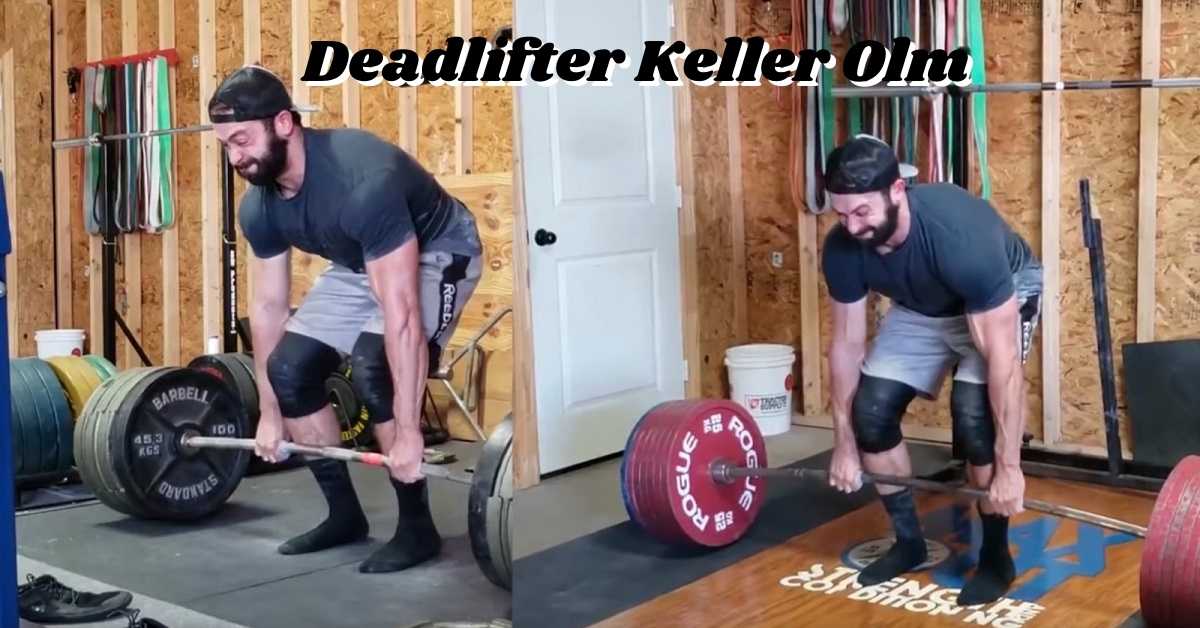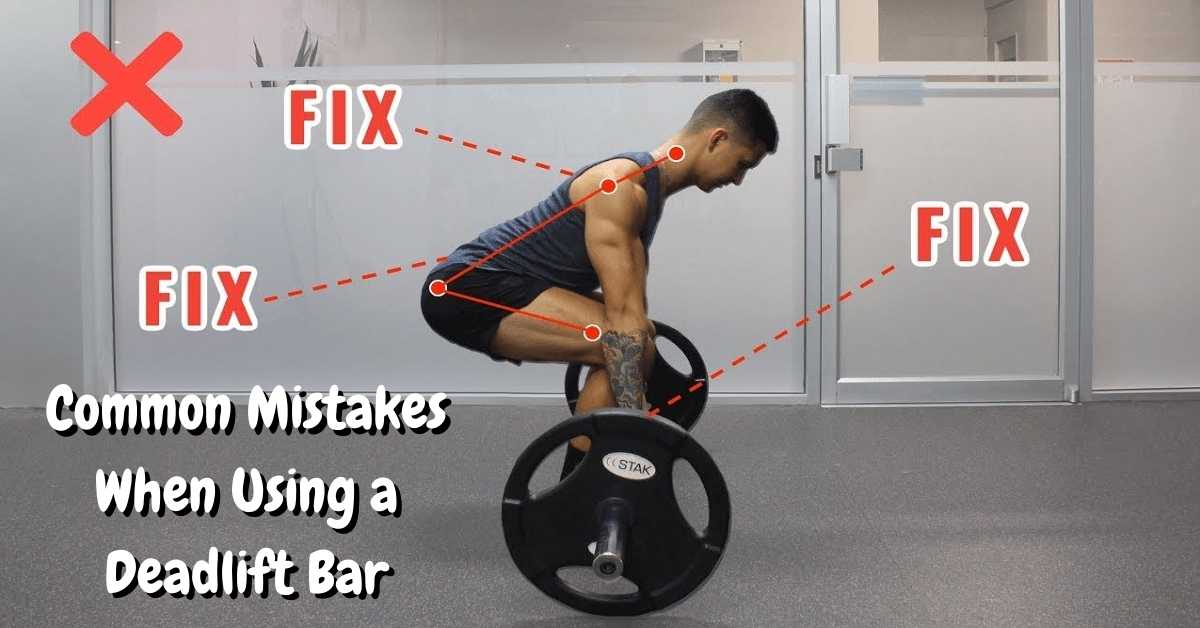The Deadlift is a crucial exercise for anyone looking to build strength and improve their overall fitness. One of the key tools used in this exercise is the Deadlift bar. While Deadlift bars offer many benefits, it’s important to be aware of the potential disadvantages as well.
In this article, we will explore the most significant advantages and disadvantages of Deadlift bars to help you make an informed decision on whether a Deadlift bar is right for you. From the comfort and grip of the bar to the impact on your body and the cost, we’ll cover all the key factors you need to consider before making a purchase. Whether you’re an experienced weightlifter or just starting out, this article will provide you with the information you need to make an informed decision on whether a Deadlift bar is right for you.
Deadlift bars lift heavy things. A deadlift bars is a customized barbell made to steal heavyweight in a short period. They are longer in overall length and smaller in diameter than standard barbells, helping you improve your grasp as a lifter while pulling the barbell up during a lift.

Because of this increase in flexibility, athletes and lifters are able to pull from a higher position before the weight is lifted off the ground, hence increasing the amount of weight that can be lifted by a single individual. Because there is a curve in the bar, you are pulling for a shorter distance. This raises the likelihood that you will surpass your present maximum effort pulling capacity.
The Differences Between the Deadlift Bars and the Standard Barbell Lift
The most significant distinction is that regular barbells have smaller diameters. Lifters will be able to grip significantly better and carry greater weights as a result, eliminating the need for straps, chalk, or a mixed grip technique.

More weight lifted for the deadlift causes the barbell to flex, which results in more whip being produced. In comparison to a conventional barbell, which is around 86 inches in length, you will receive more whip if you increase the length of the barbell by 90 inches.
A deadlift bars makes it easier to deadlift since it enables you to lift more weight with less effort.
With aggressive knurling and a narrower diameter of 27-28mm compared to the usual Olympic barbell diameter of 29mm, the barbell is designed in such a manner that you can lift as much weight as possible in a deadlift. If you compare it to a conventional barbell, which is balanced for all types of exercises like as squats and bench press, this isn’t quite as good of a deal.
What To Watch For At A Deadlift Bars?
Knurling that is aggressive

There is some type of knurling on every barbell because it improves friction, which makes the barbell easier to grasp and less likely to slide from your hands.
However, depending on the function of the barbell, the sort of knurling used will vary from the other types.
The width of the knurling
Barbells made specifically for CrossFit often have minimal or no knurling in the center of their length. This is due to the fact that it makes the barbell more comfortable to catch during Olympic lifting.
Alternatively, if the barbells are totally knurled, they are ideal for powerlifting exercises like as the deadlift. It enables you to switch up the positions of your hands without losing your grasp on the object. Close grip deadlifts and sumo deadlifts are made easier with this bar.
Difficulty of Knurling
Barbells for deadlifting feature the deepest knurling, which enables you to have a stronger hold on the barbell. This is critical since grip strength is often the weakest link in the chain for many top crossfit athletes. The disadvantage of having strong knurling is that it causes greater discomfort to the skin and may cause your garments to get damaged over time.
What is the benefit of utilizing a deadlift bars while doing a deadlift?
This is the first installment in a series of articles that will examine the impacts of performance-enhancing substances on the expression of strength. First and foremost, in order to compare apples to apples, we must first measure the variations across federations, beginning with the influence of the deadlift bars on performance.
Besides drug testing, bench press restrictions, weigh-in to competition lag, and other variances, one of the most noticeable variances amongst powerlifting federations is the barbell used for the deadlift. There are two primary alternatives:
- The power bar (also known as the “Stiff” bar).
- Bar for deadlifting.
It is clear that there are significant variances between the two barbells. A power bar, for example, has a diameter of 29mm, but a deadlift bars has a diameter of 27mm, making it simpler to grasp. Another advantage of using a deadlift bars over a power bar is that it has more space between the sleeves (51.5”), is generally longer (90.5”), and has a lower tensile strength (185psi vs 200+psi) than a power bar. The latter three characteristics make it simpler to bend the bar throughout the lift, resulting in a more straightforward lift overall.
A photograph of Deadlifter Keller Olm making a comparison between two times is seen below. Notice how the deadlift bars (shown right) bends much more than the stiff bar (shown left) before the plates reach the ground, resulting in a somewhat easier deadlift bars.

The real question is how much simpler it will get.
The simplest way to compare the differences between the two bars is to have the same set of individuals do a 1RM test with both the power bar and the deadlift bars and then compare the results. This becomes more complex since you must account for meet preparation peaking, and exhaustion. And, if the trials are not held on the same day, you must also ensure that the athletes are not just becoming stronger between the trials since they are training regardless.
All of these factors combine to make it almost impossible to conduct proper testing using those approaches. I suppose you could do it with huge sample sizes and hope that the disparities average out. But then you’d have to go to the trouble of finding a huge group of powerlifters who are capable of doing heavy deadlifts in a short period of time. We can, however, do this using the complete competition dataset, subject to a few assumptions, which I will discuss further below.
Explain Some Of The Assumptions
So, To ensure that we are doing apples-to-apples comparisons, let us review some of the assumptions.
I now accept that the open powerlifting dataset is complete and accurate. Although some entries may be missing owing to lifts asking deletion, and specific competitions may not be included, I believe the mistakes are modest enough to dismiss.
Taking the phrase “drug tested” at its value. It is reasonable to believe that if a federation is classified as tested, there aren’t many persons getting away with cheating in that federation. Perhaps more individuals are getting away with cheating, but I will suppose that the number is insufficient to sway the study results in any manner appreciably.
PDF recruits more drug-tested talents than any federation. Probably the most contentious assumption I make. During the exploratory data analysis, IPF contests had a substantially more significant percentage of submissions labeled outliers, pushing substantially higher stiff bar levels. We’ll take them out since there’s no drug-tested competition in other federations.
The “average” (i.e., not exceptional) lifts fed in IPF (stiff bar) vs. IPL (deadlift bars) are the same. In other words, the “typical” lifter merely goes to whichever fed is more convenient, and there’s no apparent reason one would select to lift a deadlift bars or a stiff bar in a federation.
Additionally, Add Some Filters.
To provide the most accurate comparison of populations, we are only looking at guys that reach full power in the raw category. In other words, these are no “deadlift-only” numbers or equipped numbers. After all the filters we’ve left with:
Entries for Stiff Bars: 101504
Entries for the Deadlift Bars: 29370
Please keep in mind that the USAPL is massive and accounts for more than half of the stiff bar submissions.
The cumulative step histogram is the first thing we’ll take a look at. As you can see, more individuals are using a deadlift bars to lift more weight than ever before. This is excellent news since it verifies the theory that using a deadlift bars makes the deadlift more manageable.
The percent of lifters whose deadlift is less than the weight on the horizontal axis may be calculated by selecting a weight on that axis and drawing an upward line straight up from that point. Taking the weight of 250kg as an example, around 75% of lifts would be unable to lift that weight on a rigid bar, while 80% would not raise that weight on an adjustable bar. In other words, a 250kg deadlift bars places the lifter in the top 25% of deadlifts using a deadlift bars and the top 20% of deadlifts using a stiff bar.
Do You Want To Learn How to Do Rack Pulls for a Back Workout Exercise Benefits Then Click Here

Deadlift Bars And The Stiff Bars.
There is a distinct difference between the deadlift bars and the stiff bars. All that remains is to quantify both of those lines to determine the difference between them.
Because we’re attempting to determine the “average” difference between a deadlift bars and a stiff bars, the next step is to eliminate the outliers, which we’ll define as the quantiles between the 15th percentile and the 85th percentile. There are not enough values at the top and bottom ends of the spectrum to produce meaningful results.
We’ll build points using the edges of the cumulative step histogram to describe this data, and then we’ll log transform it to smooth it out and make it suitable for linear regression. After reversing log modifications and displaying reversal on the original cumulative step histogram. The following findings are obtained.
Do You Want To Learn Rogue Fitness Pull Up Bar | Best Workouts at Home Then Click Here

This is very good work.
The two regression lines allow us to transform a 1 rep max deadlift from a stiff bar to an estimated deadlift bars using the data from the two regression lines (and vice versa).
Using the method and my most recent stiff bar max of 250kg, it estimates my deadlift bars max of 255kg, which is reasonable since my most recent competition on a deadlift bars was a legit sandbagged 252.5kg.
The intersection of the two lines is around 165kg, indicating that there is no substantial deadlift bars impact below that weight.
According to this methodology, a 250kg stiff bar deadlift is in the top 77th percentile of his or her weight class. The deadlift bar deadlifter in the 77th percentile lifts 255.5 kg. We predict a 250kg stiff bar deadlifter to deadlift 255.5kg on a deadlift bar. Assuming that the populations are relatively equal.
As you can see in the chart below, the disparity between the two lifters grows more excellent and more significant as the lifter grows stronger. When you examine the two bars from a mechanical standpoint, you will find that they are consistent. When you add additional weight, the bar bends more, which means the lifter does not feel the full force of the weight until the bar has turned to a particular extent.
[table id=17 /]
Common Mistakes When Using Deadlift Bars

Inappropriate Body Language
The lifter should stand about one inch away from the barbell with its shins to achieve proper setup. The barbell is directly above the center of the foot in this configuration (which is often the tongue on the lifting shoe). In this case, the barbell will be behind the midfoot. And the shoulders will be too far forward if the lifter sets up too close (less than 1 inch).
As a result, the barbell will often swing away from the lifter as it comes off the floor, impacting the shins on the first repetition. In addition, the hips are often excessively high in this circumstance.
Hips that are too low
If the lifter makes this error, they may start by setting up then but drop their hips too low, which usually pushes the bar past the midfoot. Squatting off-floor bar is the word used to describe this. Inefficient pulling occurs when the lifter’s hips are too low about his or her body weight.
Do You Want To Learn Best Hack Squat: Tips And Complete Guide For Your Exercise Then Click Here
Taking a Swing at the Bar
It would help if you squeezed the slack out of the barbell rather than yanking it off the floor while you are setting up. After raising the bar heavily in his hands and waiting for a “click” between the sleeve and the plates. The lifter should feel the bar getting heavy in his hands as his back becomes a typical anatomical extension.
The Bar is Being Rolled
You will probably have no clue where the barbell will end up at the start of the pull if you do this; it will most likely not finish up squarely over the midfoot as it should. Begin with the barbell 1 inch from your shins and right above your midfoot, then work your way up.
Knee Valgus is a condition in which the knee bends inward (aka Knee Cave)
When you’re getting ready for the deadlift, push your knees out so that they’re up against your elbows. They shouldn’t be pushed out to bend your elbows, but they should stay out. When the knees drop-in (knee valgus), the adductors lose their effectiveness.
Excessive flexion of the low back
The positioning of the spinal erectors into proper anatomical Extension is, in my opinion, the most critical component of the deadlifting process. This happens on the fourth step when the lifter squeezes their chest forward.
Back Extension is being lost.
Another typical deadlift fault is the failure to maintain the back in Extension (the back physically “rounds” throughout the lift). Although the lifter takes every attempt to retain low back extension, this may happen when lifting or competing.
The lockout had a shrug.
When you’re locked out, don’t shrug your shoulders or raise your traps. Stand up and think “proud chest” as you would usually.
There was an overabundance of people at the Lockout.
Don’t lean back too much during the Lockout since you may be overextending your spine as a result. Again, think of yourself as having a “proud chest.”
Inability to extend the hips during the Lockout.
This is the polar opposite of overextension during the Lockout in that a lifter may not be able to complete the Lockout entirely on occasion. By standing tall and envisioning your shoulders in line with your hips. Which should be in line with the center of your foot, you can bring your hips to full Extension.
Getting the Bar to Jump Off the Ground
This is most frequently seen in Crossfit when the barbell is bounced off the ground instead of a full halt. The deadlift is called a “dead” lift because it should begin with a total standstill before going forward.
Taking a Too Big Grip
Using extended grip on the barbell will shorten your arms unnaturally, resulting in a more inefficient and hard deadlift that will be longer and more hard.
Taking a Too-Close Hold
It is impossible to force your knees out if you grab the barbell with a very tight grip. And if you do push your knees out, it is common for your elbows to flex as a result. If you begin the pull with your elbows bent, you are doing a yank.